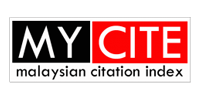Performance of Chlorella vulgaris in Phycoremediation of Livestock Effluent
DOI:
https://doi.org/10.58915/aset.v3i.573Keywords:
Phycoremediation, Chlorella vulgaris, Livestock effluentAbstract
Livestock effluent is known to contain significantly higher concentrations of organic matter and challenging-to-degrade organic compounds compared to urban wastewater. This makes the effluent treatment challenging and adversely affects nearby aquatic environments if improperly treated. Phycoremediation uses microalgae in water and wastewater treatment. This research aim was to evaluate pollutant removal efficiencies, including chemical oxygen demand (COD), total suspended solids (TSS), nitrate (NO₃-N), turbidity, and phosphate (P), using microalgae Chlorella vulgaris (C. vulgaris) cultivation systems for livestock effluent treatment. The biomass weight of C. vulgaris in the cultivation systems was also observed. In this study, C. vulgaris was cultivated in closed cultivation systems in 5 L water bottles with different dilutions (100%, 75%, 50%, and 25%). The water effluent was compared to permissible values using the National Water Quality Standard (NWQS) class II for recreational water use. TSS was significantly removed by 61.97%, while COD and P were removed by 39.1% and 36.4%, respectively. The biomass growth was observed through the dry weight of the C.vulgaris. Therefore, the removal of nutrients from cattle farm effluent by phytoremediation using C. vulgaris demonstrates potential for treatment efficacy.
References
Nik Daud, N. N., & Anijiofor, C. S. Livestock wastewater generation and farm management: the gap analysis. In III International Conference on Agricultural and Food Engineering, vol 1152 (2016, August) pp. 265-272.
Zayadi, R. A. Current outlook of livestock industry in Malaysia and ways towards sustainability. Journal of Sustainable Natural Resources, vol 2, issue 2 (2021) pp. 1-11.
Moekti, G. R. Industrial livestock production: A review on advantages and disadvantages. In IOP conference series: Earth and Environmental Science, vol 492, issue 1 (2020, April) p. 012094.
Gupta, S. K., Sriwastav, A., Ansari, F. A., Nasr, M., & Nema, A. K. Phycoremediation: an eco-friendly algal technology for bioremediation and bioenergy production. Phytoremediation potential of bioenergy plants, (2017) pp. 431-456.
Ummalyma, S. B., Pandey, A., Sukumaran, R. K., & Sahoo, D. Bioremediation by microalgae: current and emerging trends for effluents treatments for value addition of waste streams. Biosynthetic technology and environmental challenges, (2018) pp. 355-375.
Viegas, C., Gonçalves, M., Soares, L., & Mendes, B. Bioremediation of agro-industrial effluents using chlorella microalgae. In Technological Innovation for Cyber-Physical Systems: 7th IFIP WG 5.5/SOCOLNET Advanced Doctoral Conference on Computing, Electrical and Industrial Systems, DoCEIS 2016, Costa de Caparica, Portugal, April 11–13, 2016, Proceedings 7, (2016) pp. 523-530.
Otondo, A., Kokabian, B., Stuart-Dahl, S., & Gude, V. G. Energetic evaluation of wastewater treatment using microalgae, Chlorella vulgaris. Journal of Environmental Chemical Engineering, vol 6, issue 2 (2018) pp. 3213-3222.
Znad, H., Al Ketife, A. M., Judd, S., AlMomani, F., & Vuthaluru, H. B. Bioremediation and nutrient removal from wastewater by Chlorella vulgaris. Ecological Engineering, vol 110, (2018) pp. 1-7.
Vaishnav, S., Saini, T., Chauhan, A., Gaur, G. K., Tiwari, R., Dutt, T., & Tarafdar, A. Livestock and poultry farm wastewater treatment and its valorization for generating value-added products: Recent updates and way forward. Bioresource Technology, (2023) p. 129170.
APHA, AWWA, WEF, “Standard Methods for Examination of Water and Wastewater,” Washington. Am. Public Heal. Assoc., (2012).
Umamaheswari, J., & Shanthakumar, S. Efficacy of microalgae for industrial wastewater treatment: a review on operating conditions, treatment efficiency and biomass productivity. Reviews in environmental science and bio/technology, vol 15, (2016) pp. 265-284.
Salgueiro, J. L., Perez, L., Maceiras, R., Sanchez, A., & Cancela, A. Bioremediation of wastewater using Chlorella vulgaris microalgae: Phosphorus and organic matter. International Journal of Environmental Research, vol 10, issue 3 (2016) pp. 465-470.
Department of Environment, Environmental Requirements: A Guide For Investors, 11th ed., no. October. Putrajaya: Ministry of Natural Resources and Environment, Malaysia, (2010).
Lv, J., Liu, Y., Feng, J., Liu, Q., Nan, F., & Xie, S. Nutrients removal from undiluted cattle farm wastewater by the two-stage process of microalgae-based wastewater treatment. Bioresource technology, vol 264, (2018) pp. 311-318.
Juneja, A., Ceballos, R. M., & Murthy, G. S. Effects of environmental factors and nutrient availability on the biochemical composition of algae for biofuels production: a review. Energies, vol 6, issue 9 (2013) pp. 4607-4638.
Li, F., Amenorfenyo, D. K., Zhang, Y., Zhang, N., Li, C., & Huang, X. Cultivation of chlorella vulgaris in membrane-treated industrial distillery wastewater: Growth and wastewater treatment. Frontiers in Environmental Science, vol 9, (2021) p.770633.












